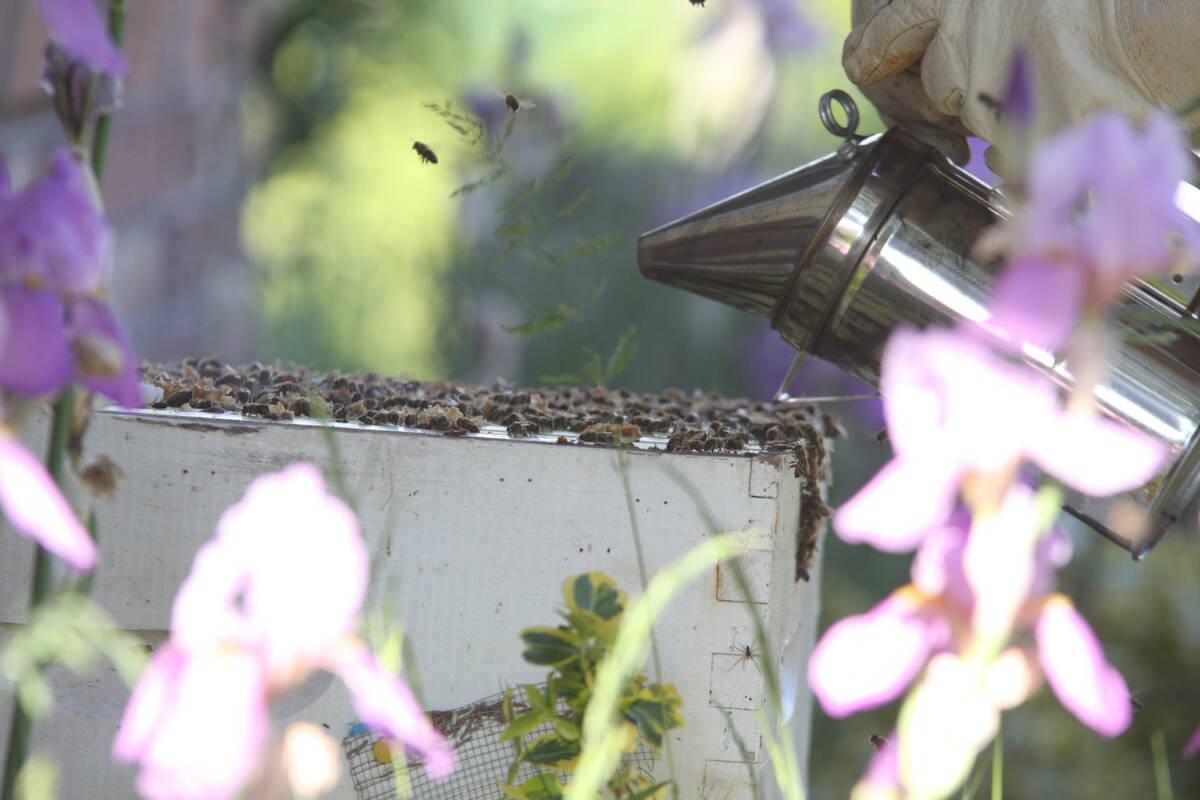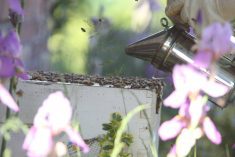Trapping pocket gophers is proving more effective than any other method
of control.
Voracious, buck-toothed, subterranean forage spoilers, the pocket
gopher has few friends among hay producers in Western Canada’s darker
soil zones.
From the Manitoba-Ontario border to the Peace River country of northern
British Columbia, it builds dirt mounds in farmers’ fields and eats the
roots and the stems of alfalfa crops.
Forage producers damage their equipment when they collide with the
Read Also

Manitoba beekeepers battle for survival
Honeybee colony losses have hit 43 per cent, making 2025 the latest in a string of poor bee survival years for Manitoba’s honey producers
rodents’ telltale earthen mounds. Their customers complain of excessive
dirt in the hay. If growers raise their cutting height, they leave
valuable crop in the field.
Manitoba Forage Council research reports show that in fields where the
rodent is a pest, first-cut losses average 28 percent and second cut 21
percent.
Due to its elusive underground lifestyle, this cousin of the
Richardson’s ground squirrel poses serious control problems for farmers.
When a farmer opens the tunnel to put in poisoned bait, the rodent
often takes it and uses it to help fill in the man-made breaches.
Researchers from Alberta and Manitoba say that despite their best
efforts over the years, poisons, tunnelling machines, anhydrous
ammonia, propane-and-oxygen burning and numerous other solutions all
failed to provide more than 35 percent control. Some methods provided
no control, with poison being the best of the less-successful systems.
Trapping has been the most successful strategy.
George Bonnefoy of the Manitoba Forage Council and said in a trial
where producers near Carmen, Man., were using a combination of poison
and trapping, the farmers eventually gave up on the poison. When
funding for the project ended, the forage growers chose to continue
with only the trapping control.
“It cost between $2.34 and $2.59 for each gopher trapped,” he said.
“They paid someone to do it for them. In one season there were 958
caught this way …. It can take several seasons. They now have their
area populations reduced to manageable levels with little or no damage.”
Bonnefoy said a successful control program depends on all farmers in
the area maintaining a perimeter once the pocket gophers are under
control.
“You start in the middle of a field and you work your way out to the
edges. The same for a larger area. Once you have them out, you keep
them out,” he said.
“The tricky part is getting 12 or 20 or more farmers to agree to spend
the money to get rid of the problem and keep it that way ….
Individuals don’t get results. They spend all of their time chasing
back and forth between farms and fields and their own tails. It has to
be a group decision.”
Gilbert Proulx, a lecturer at the University of Alberta who also works
for a wildlife research and consulting company, agreed. His studies
have found that traps are the most effective, but more study is needed
to improve them.
“Farmers can be reluctant to use traps,” he said.
“They cost money. They are labour intensive. But on the first night
out, you can expect to fill 50 percent of your traps. It will stay that
way until the population diminishes.”
Bonnefoy and Proulx said research alfalfa fields that have been cleared
of the pocket gophers show that producers can expect two additional
years of cropping, “have only one third the (equipment) repair costs”
and produce better quality hay.
Proulx said the traps that have proven most effective have no floor and
a double trap wire.
Pheromones have been used successfully to improve their effectiveness,
but Proulx said he currently has no funding to continue his research.
Trapping procedure
Locate a fresh mound of dirt. Soil may be moist or have no rain damage.
Look for dimple in the mound where the pocket gopher has been kicking
out the soil from tunnel building.
Dig out this entrance and place a trap, preferably a floorless model,
in the hole. Cover the sides and most of the above ground end with
soil.
Leave a small gap at the above ground end. The gopher abhors daylight
and will try to pass through the trap to plug the breech.
Tie the trap to a stake for recovery and to prevent its theft by
predators.














